Dancing on the the Barn Floor Art Work Value

- ane Introduction
- 2 Technique & creation procedure
- iii The championship
- 4 Location of the artwork
- v Analysis
- vi Autumn Rhythm in fashion
- 7 Value of the painting
- viii Analysis
- 9 Conclusion
Introduction
Autumn Rhythm (Number thirty) is an abstract expressionist painting by Jackson Pollock. It is currently at the Metropolitan Museum of Art in New York City and is considered one of the virtually remarkable pieces of art all of the time.
The painting, which stands 266.7 × 525.eight cm (105.0 × 207.0 in), is one of the largest and most impressive of Pollock's paintings and has been called groundbreaking by critics.
His infamous painting technique included working on unprimed canvas laid on the studio floor. Pollock splashed paint directly from the cans or using sticks, heavily loaded brushes, knives, syringes, too equally other gears to control a stream of color as he seeped and chucked into the canvas.
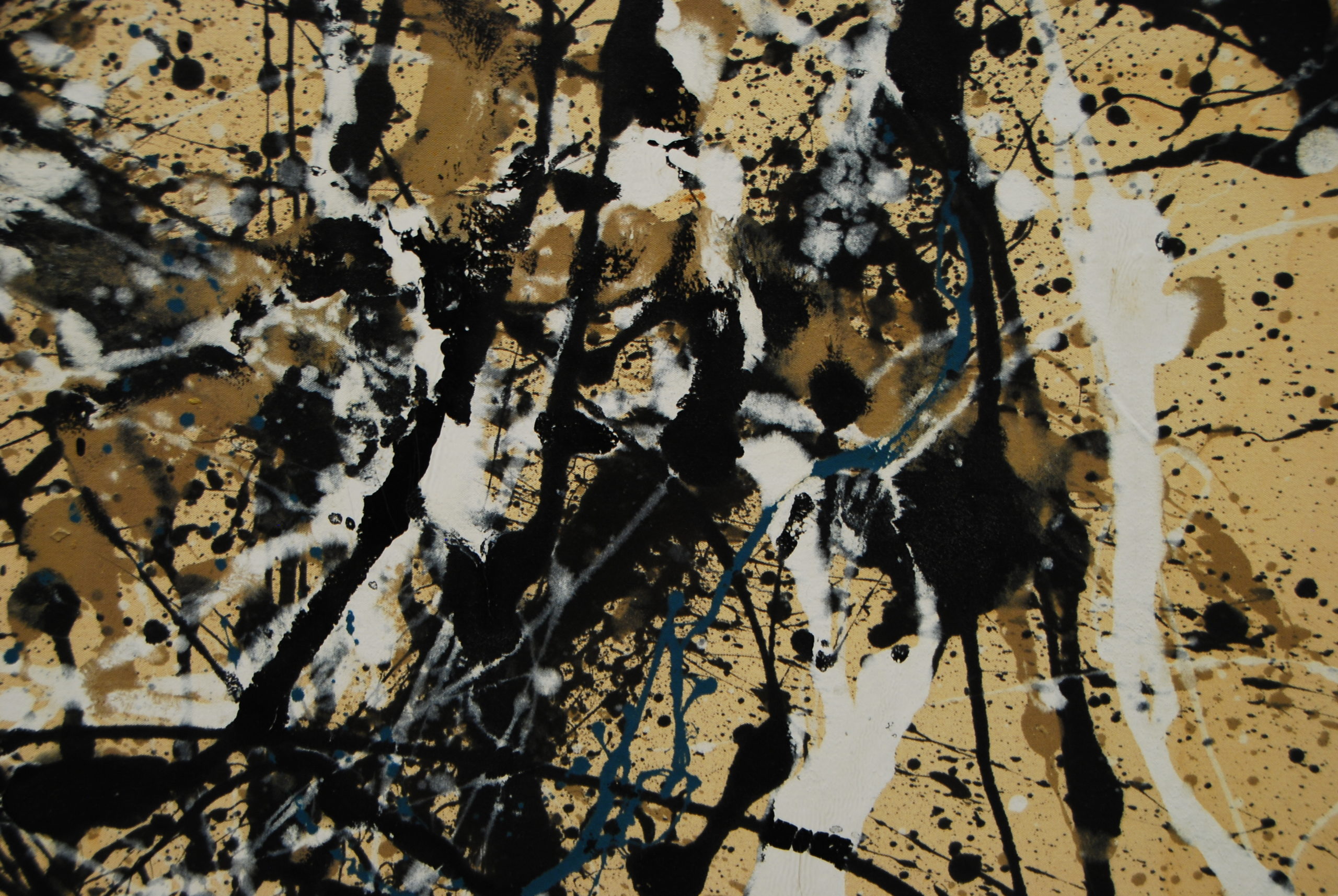
Technique & creation process
This painting was created in the autumn of 1950 at the creative person's studio in Springs ane , New York, as a part of a collection of paintings he exhibited at the Betty Parsons Gallery in 1951.
It took him several months to create Autumn Rhythm (Number xxx), with his friend and lensman Hans Namuth partly documenting the process. Through this documentation, Namuth provided us with an insight into the sequence in which Jackson Pollock filled in the canvas and the society in which pigment colors were applied to the painting.
10 min xiii sec
From the images of the painting procedure, information technology tin can be seen that Pollock started painting the right third of the canvass, laying down a reel of thin night lines, before calculation other shades of colors such as white and browns with little teal bluish.
He used various dripping and pouring techniques to create dissimilar kinds of lines and splashed areas of paint until information technology began to await like its finished land. Lastly, he worked on the center section of the slice before finishing with the left-hand section. He painted from all sides of the sheet throughout the entire process.
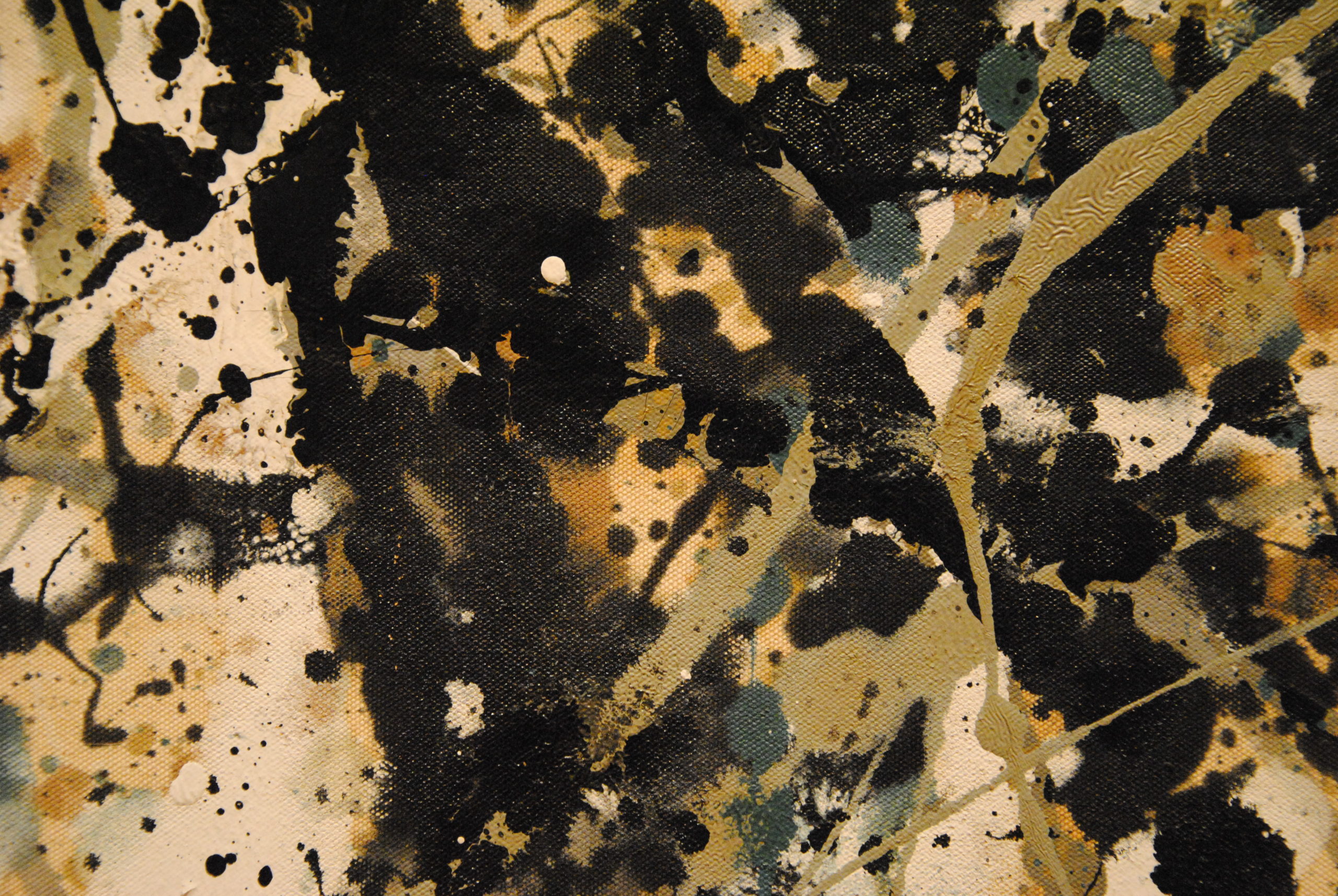
The title
When the work was complete, he gave it the championship Number xxx. Throughout the late 1940s and early 1950s, Pollock gave his artworks numbers instead of titles so that, according to him, the viewers were non distracted by disguised meanings.
However, the numbered titles practice not imply the sequence in which the pieces were created. Simply when this work was displayed at the Sidney Janis Gallery in 1955, the artwork bore the title Autumn Rhythm without the number.
The artist didn't give whatsoever reason for the championship modify, though fine art historian Timothy J. Clark thinks that Fall Rhythm might have been Pollock'due south ain title for the work.
Location of the artwork
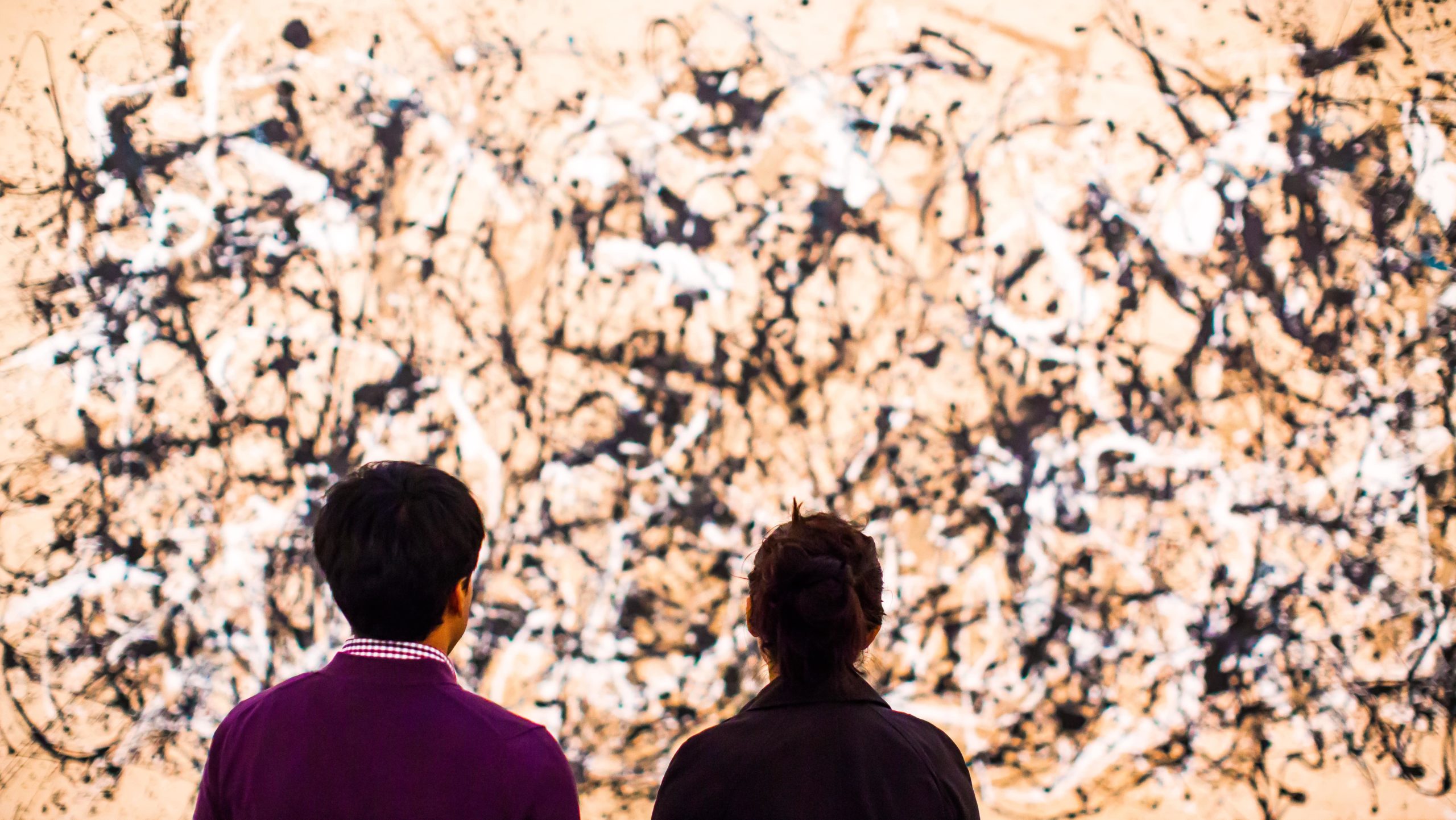
Autumn Rhythm is on view at The Met Fifth Avenue in Gallery 919 ii .
Metropolitan Museum of Art
thou 5th Ave, New York, NY 10028
Analysis
Autumn Rhythm (Number 30) is considered one of the most influential paintings of all time. Information technology has inspired many people across different fields, including scientific discipline and manner.
Pollock'south painting style has been debated inside physics, as it raises questions as to whether or not it displays evidence of fractal patterns.
A physicist from Boston College and mathematician from Harvard teamed up with an art historian to examine Pollock'southward application of coiling instability in his paintings.
According to Roberto Zenit, a physicist at the National Autonomous Academy of Mexico and Chocolate-brown University, it is highly possible that Pollock relied intensely on physics as he painted, but whether it was deliberate or not is not known.
All the same, he liked playing with viscosity and texture when preparing his paints, adding some solvents to make them thinner or thicker. In footage from 1950 recorded by Namuth, Pollock tin exist seen working on a project, and at ane bespeak, he says iii :
I can command the flow of pigment. There is no blow.
Embed from Getty Images
Jackson Pollock behind i of his paintings in his studio at The Springs, Due east Hampton, New York, August 23, 1953
Physicists and mathematicians are currently debating whether or non Pollock deliberately used coiling in his paintings. However, co-ordinate to Zenit, the artist'southward painting style is not actually "dripping" if you look at it from a fluid mechanics point of view. He stated 4 :
"Dripping" is a term that refers to the break upwards of a fluid jet onto drops resulting from surface tension instability. For the status under which Pollock painted, the fluid filaments rarely fragmented while they were applied.
Zenit and his squad used the footage from Pollock'south workplace to analyze how the creative person worked. He recorded how quickly he moved and the distance from the canvas as he puddled the paint. Side by side, the squad built a organisation in the form of a big syringe attached to an adjustable stand to simulate those movements. Zenit wrote 5 :
We tin vary one thing at a time and so we can decipher the fundamental elements of the technique. For example, we could vary the superlative from which the pigment is poured and go along the speed constant to see how that changes things.
The result of the experiment was rather shocking. Rather than using coiling, they found that about traces that the artist produced were since Pollock actively avoided coiling instabilities.
The findings contradicted the 2011 enquiry past a team led past physicist Andrzej Herczynski. Zenit added:
Specifically, Pollock moved his paw at sufficiently high speed and at a depression-enough height as to suppress the emergence of coiling. Like most painters, Jackson Pollock went through a long process of experimentation to perfect his technique. What nosotros were trying to practice with this inquiry is figure out what conclusions Pollock reached in gild to execute his paintings the way he wanted. Our principal finding in this paper was that Pollock'southward movements and properties of his paints were such he avoided this coiling instability.
Embed from Getty Images
Jackson Pollock opening the barn door to his studio The Springs, E Hampton, New York, August 23, 1953
Like any other research, more than study is needed, and this is not a conclusion on the subject field. I of the challenges Zenit and his team faced during their analysis was that the footage used was from 1950 and thus had a very low resolution.
This means there is some level of uncertainty regarding the measurements they used. For example, they could not go the concurrent elevation and hand speed measurements, thus making it hard to correlate the 2 variables.
Too, though Zenit et al. used a like paint to Pollock's – a commercial black cellulose Nitrate lacquer, the materials they used likely had a different composition to materials used by Pollock, therefore dissimilar degrees of density and viscosity.
Another flaw in Zenit et al.'southward report is that Pollock didn't characteristically agree the stick he sued to splatter paint vertically. Instead, he typically swung it in wide bows, though Zenit proved that this was not pregnant enough to change the concluding finding. The team concluded 6 :
This consequence could be of importance for authentication: a painting with besides many coiled traces would bespeak that the painting was not created past Pollock. Furthermore, understanding the weather condition for which the coiling can be prevented could have implications in practical applications where such an effect needs to be prevented, equally in the example of ink-jet printing or the fabrication of optic fibers.
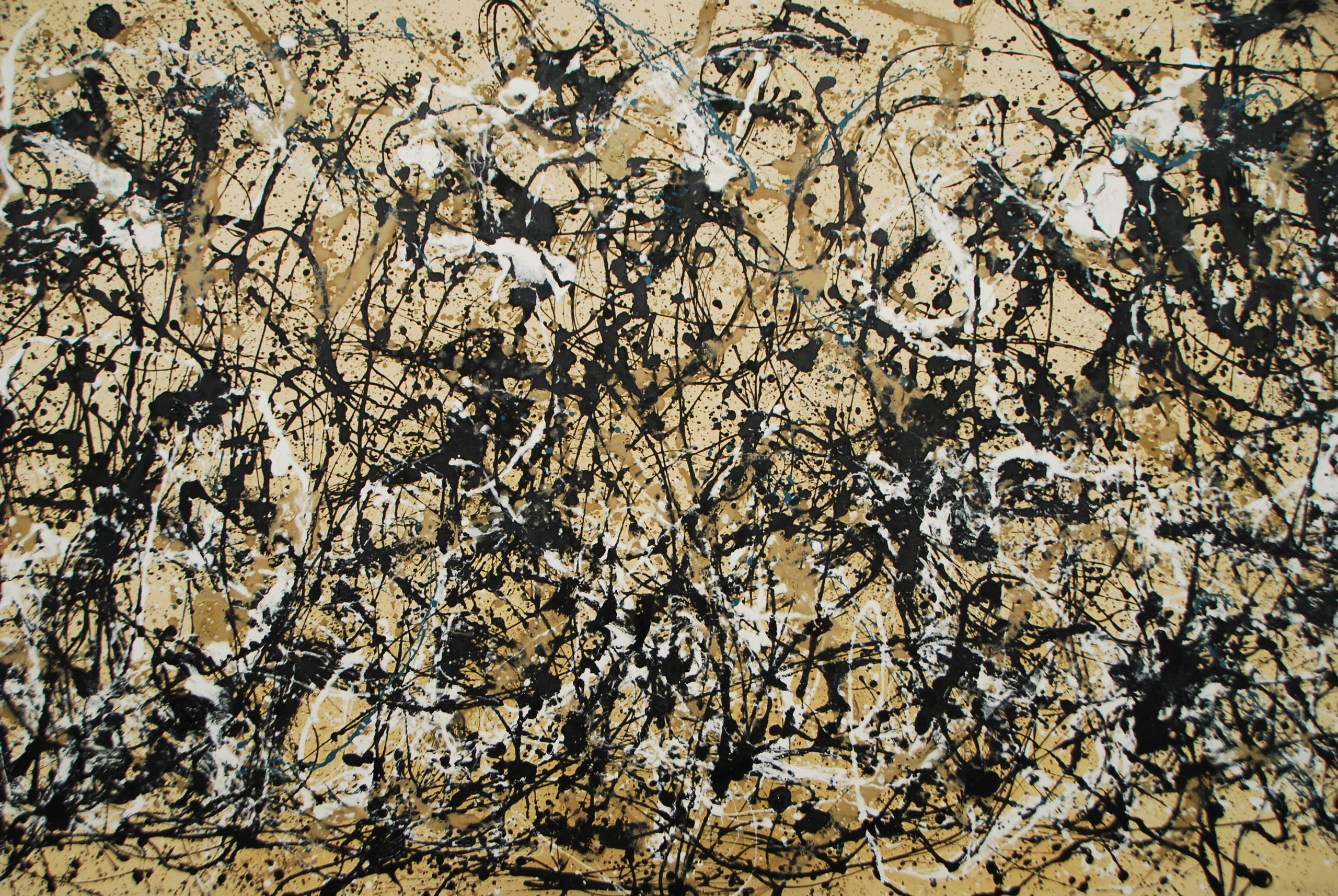
Fall Rhythm in fashion
Jackson Pollock's Number 30 also influenced the fashion world. Many designers are drawn to the artist's painting manner because the splatter invokes a street-style look. Pollock'south work is about movement and has inspired countless casual outfits.

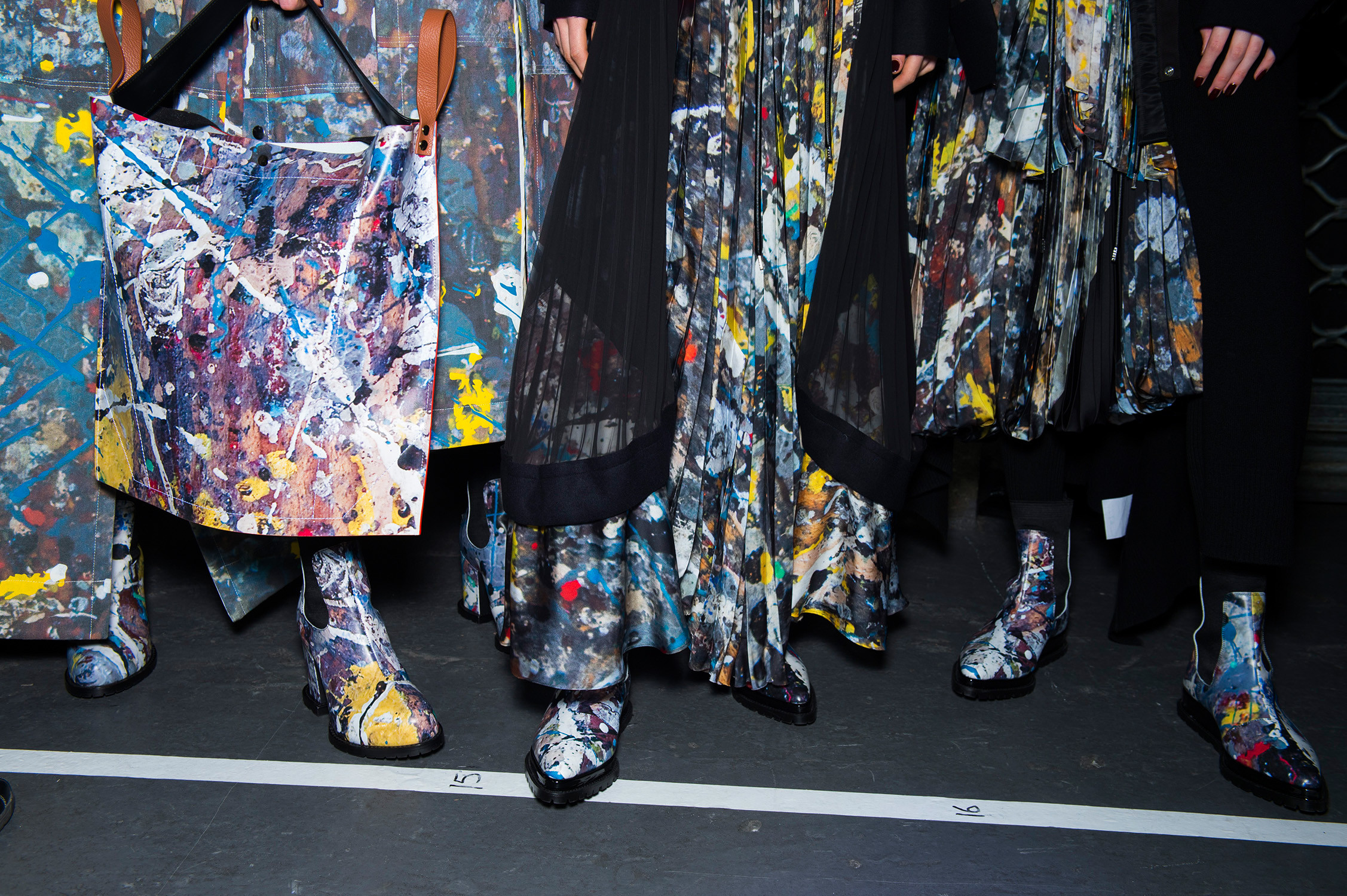

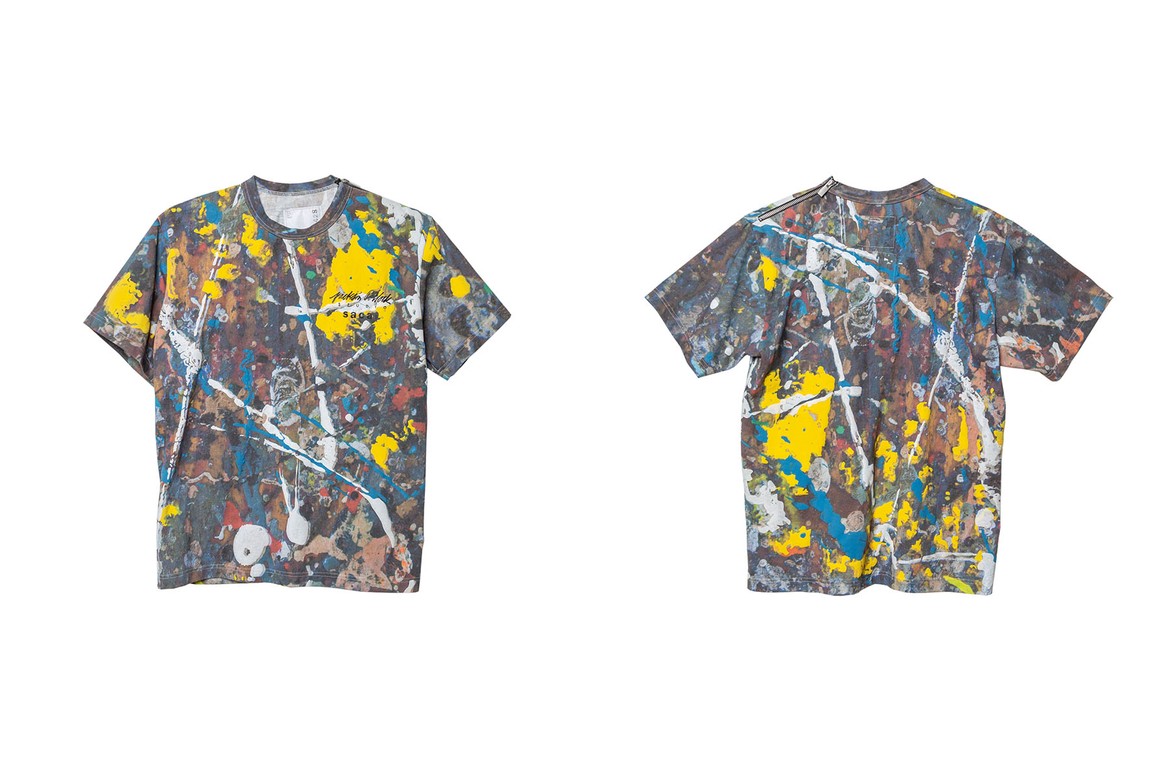
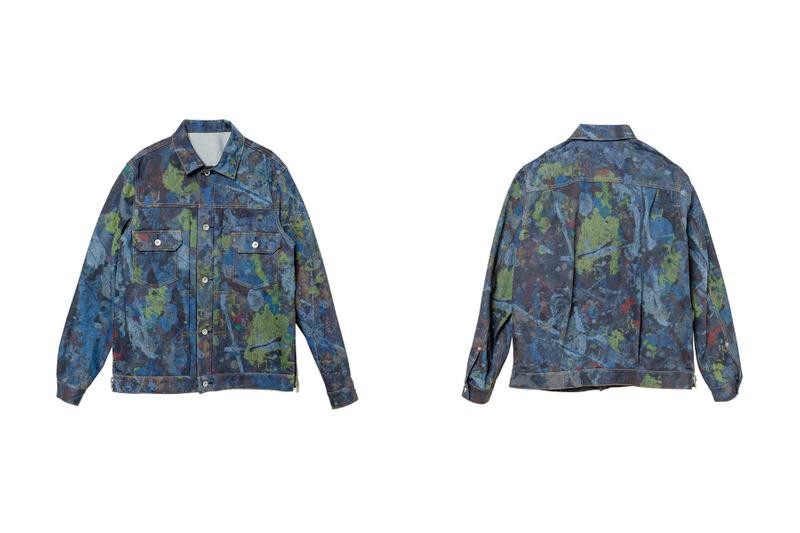
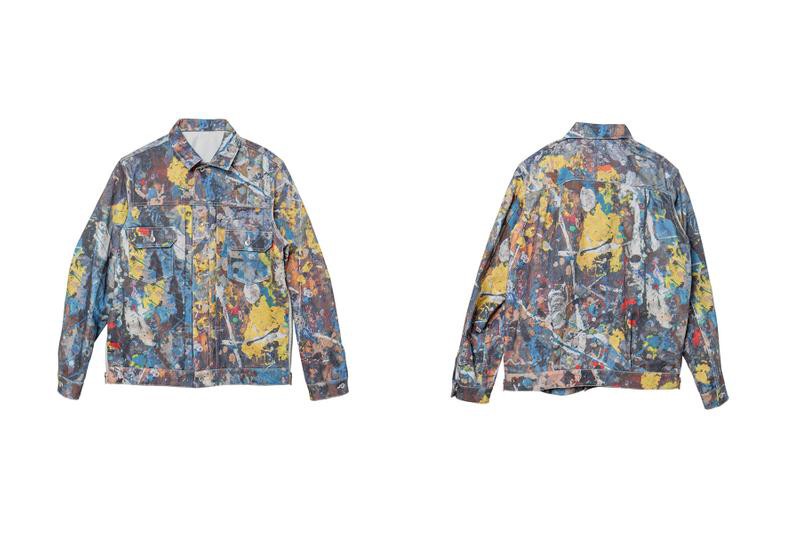
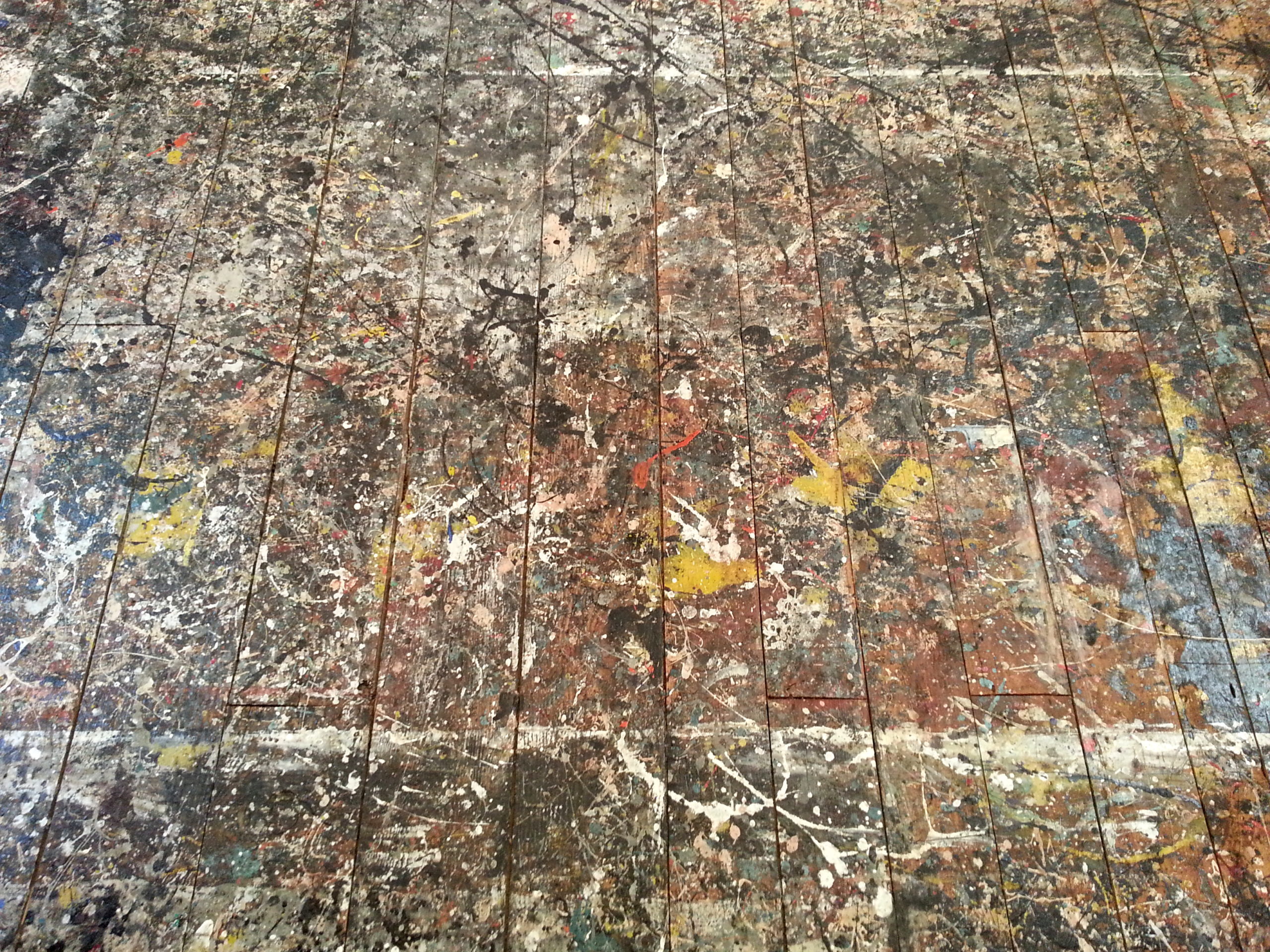
Japanese designer Chitose Abe's way label Sacai created a clothing line using details from Jackson Pollock'southward paint-splattered studio flooring in The Springs. The dress was unveiled in Sacai's Autumn 2019 Ready-to-Habiliment Drove and premiered in Paris in January 2019. The project was a collaboration with Pollock-Krasner Business firm & Study, according to the Due east Hampton Museum.
But that wasn't the first time Pollock's painting splatters were used in fashion. The fine art motion abstract expressionism made a massive hit on style runways in the 2013/14 apparel collection, including Paint Splatter sneakers by Maison Martin Margiela.


As way and art historians continue to argue whether way is art, there is no denying the influence, particularly when looking at some of the directly links between abstract expressionism and its effect on the electric current mode industry.
Value of the painting
Almost all of Pollock'southward baste paintings are in museum collections. Notwithstanding, there is 1 exception: For a long time, Pollock's No. 5 (1948) has been considered the most expensive painting of all time, with a reported purchase toll of $ 140 meg.
This ruby-red, yellow and gray artwork was previously displayed at the Museum of Mod Art and inverse hands to David Geffen. It was and then sold by him in November 2006 vii to Mexican entrepreneur David Martínez in a individual transaction, even though Martinez's attorneys denied that he endemic the painting.
With merely one recorded price of a comparable artwork within the final 15 years or so, estimating the price of Autumn Rhythm is challenging. Additionally, a limited supply of artworks by legendary and groundbreaking 8 artists such as Pollock can atomic number 82 to unpredictable and outrageous prices. Buyers pay for not only an artwork but likewise the special status that comes along with it.
1 min 6 sec
In comparison to No. five, measuring 1.2 ten 2.4 m (4 x 8 pes), Autumn Rhythm (Number thirty) is roughly five times larger. Given its size and standing, the painting should be priced up of $ 140 meg fifty-fifty when adjusted for inflation.
We will probably not find out the exact cost anytime presently. Autumn Rhythm (Number thirty) is in the permanent collection of the Metropolitan Museum of Art. Despite the museum's deaccessioning plan 9 , the MET has a $three.3 billion endowment and a 150-yr history of generous donors ten . This makes it highly unlikely that the painting will ever end up on the secondary art market.
Analysis
Whether Pollock was inspired past physics or not, Fall Rhyth and many of his other paintings have had a massive influence on abstract expressionism. The unofficial title of this painting (Autumn Rhythm) suggests the month in which it was created, which is October, as well every bit implies an alignment with nature's constant mutability.
Past spreading the canvas on the floor, Pollock obtained absolute freedom of move and the capacity to splash paint on the canvas. Having consummate freedom of movement was important, especially when dealing with such immense spaces, which he loved dealing with. Fine art critics believe that Pollock'due south honey for vast spaces was due to his youthful recollections of infinite Savannah as well as the 1000 Canyon.
Autumn Rhythm has a stunning size, and its uniqueness lies in the fact that it is quite a fascinating sight both upwards close and from a distance. Depending on the whims of the audience'due south imagination, it tin can exist seen coiled in the dance of the human being body, the ghostly figures of animals, and enigmatic symbols curtained in its depths. The painting exudes a sense of mastery and spontaneity.
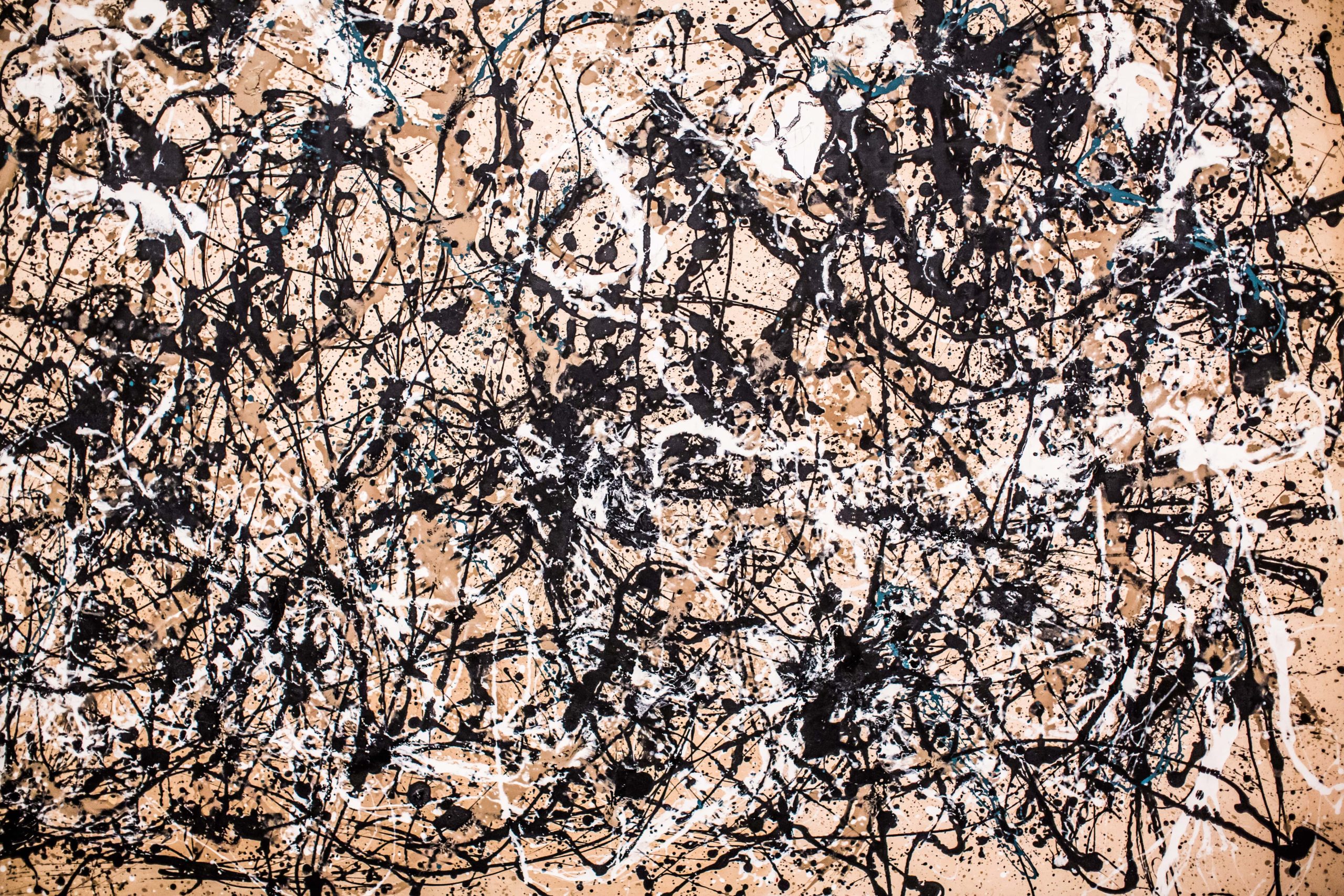
Conclusion
Next fourth dimension y'all come across Autumn Rhythm, attempt to move beyond the basic paint patterns on the canvas and see a lone note of sound untangling in thick and sparse, curved and straight, monochrome and Versicolor dribbled lines. Just allow your mind wander along with the complex lacework of Jackson Pollock's tune on canvas. Follow your instinct.
Footnotes
- https://world wide web.stonybrook.edu/pkhouse/
- https://maps.metmuseum.org/galleries/fifth-ave/two/919
- https://www.tate.org.u.k./art/artists/jackson-pollock-1785/jackson-pollock-separating-man-myth
- https://www.ncbi.nlm.nih.gov/pmc/articles/PMC6821064/
- https://www.eurekalert.org/news-releases/467753
- https://www.ncbi.nlm.nih.gov/pmc/articles/PMC6821064/
- https://www.nytimes.com/2006/11/02/arts/design/02drip.html
- https://publicdelivery.org/tag/groundbreaking/
- https://world wide web.latimes.com/amusement-arts/story/2021-02-14/art-deaccessioning-metropolitan-museum
- https://www.cnbc.com/2020/08/29/coronavirus-the-mets-three-billion-endowment-couldnt-salve-it-from-layoffs-as-iconic-museum-struggles-with-pandemic.html
williamsfunge1991.blogspot.com
Source: https://publicdelivery.org/jackson-pollock-autumn-rhythm/
0 Response to "Dancing on the the Barn Floor Art Work Value"
Post a Comment